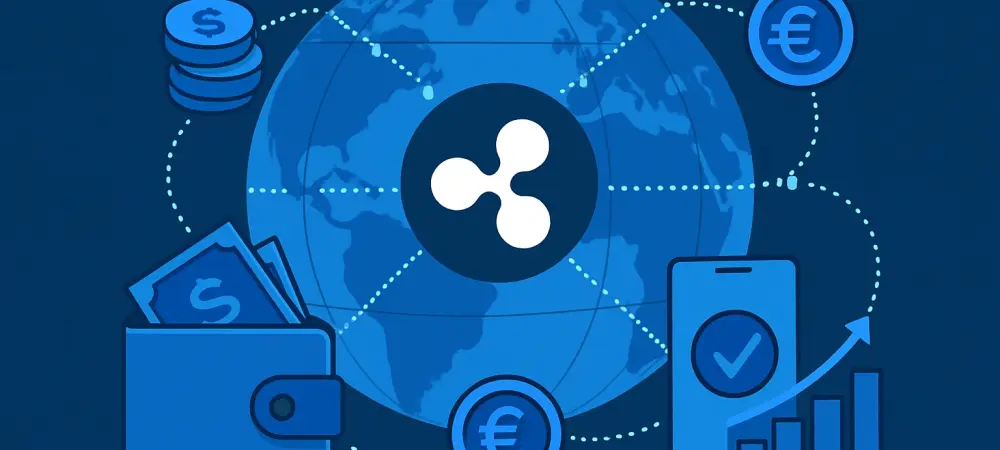In an era where global transactions are becoming increasingly complex, the financial industry faces mounting pressure to deliver faster, cheaper, and more efficient solutions for cross-border payments, a challenge that often involves navigating multiple currencies and regulatory frameworks across diverse regions. The traditional systems that have long underpinned international money transfers are being scrutinized for their inefficiencies, particularly in terms of cost and settlement times. Amid this landscape, Ripple, with its innovative use of XRP as a bridge currency, has emerged as a notable contender, promising to streamline these processes. At the same time, SWIFT, the long-standing backbone of global banking communication, is adapting to modern demands by exploring blockchain technology and interoperability. This dynamic raises critical questions about how these two forces might shape the future of international finance, and whether a collaborative or competitive path lies ahead for them in addressing the evolving needs of banks and financial institutions worldwide.
Exploring Ripple’s Role in Global Transactions
Addressing Cross-Border Challenges with XRP
Ripple has carved out a distinct niche in the realm of international payments, particularly where transactions span multiple currencies and borders. A key strength lies in its ability to tackle liquidity issues that often plague traditional banking systems. By utilizing XRP as a bridge currency, Ripple enables on-demand liquidity, which eliminates the need for banks to maintain pre-funded nostro accounts in foreign jurisdictions. This approach not only reduces costs but also accelerates settlement times, addressing a persistent pain point for financial institutions. The technology offers a compelling alternative for scenarios where foreign exchange inefficiencies and delayed finality hinder operational efficiency. As global trade continues to expand, such solutions are gaining attention from banks seeking to optimize their cross-border operations without overhauling existing infrastructure, positioning Ripple as a targeted tool in specific high-friction payment corridors.
Limitations in Broader Payment Ecosystems
Despite its strengths, Ripple’s applicability is not universal across all payment types. Industry experts have noted that its technology may not be ideally suited for high-volume, low-latency retail payment systems, where speed and scale are paramount. The architecture of Ripple, while efficient for cross-border use cases, struggles to match the processing demands of domestic retail transactions that require near-instantaneous throughput. This limitation highlights a critical distinction in its role within the financial ecosystem, as it is often considered more of a specialized solution rather than a one-size-fits-all platform. Banks and payment providers must weigh these constraints when integrating Ripple into their systems, recognizing that while it excels in certain areas, other technologies or traditional infrastructures might be better suited for handling the sheer volume and immediacy required in everyday consumer transactions across local markets.
SWIFT’s Strategic Approach to Innovation
Balancing Blockchain with Systemic Stability
SWIFT, as a cornerstone of global financial communication, maintains a cautious yet forward-thinking stance on emerging technologies like blockchain. While acknowledging the potential of distributed ledger systems, the organization prioritizes their application in areas such as trade finance and correspondent banking, where data verification and settlement assurances take precedence over raw speed. This measured approach reflects a broader industry trend of testing and validating new tools before full-scale adoption, ensuring that innovations align with the needs of its member banks. SWIFT’s commitment to neutrality, driven by its community-led governance model, further shapes its strategy, aiming to avoid over-reliance on proprietary solutions. This focus on systemic stability ensures that any integration of blockchain technology enhances, rather than disrupts, the trusted infrastructure that underpins international banking networks.
Prioritizing Interoperability and Collaboration
A defining aspect of SWIFT’s innovation strategy is its emphasis on interoperability among diverse payment systems. Rather than positioning itself as a competitor to emerging players, SWIFT seeks to create an environment where various technologies can coexist and complement one another. This vision is evident in ongoing pilots exploring tokenized assets and blockchain integration, designed to enhance efficiency without compromising the collaborative nature of its network. By fostering standardized infrastructure, SWIFT aims to address the fragmented nature of global payments, ensuring that banks and financial institutions can adopt new tools without sacrificing connectivity. This collaborative ethos suggests a future where specialized solutions, such as those offered by certain fintechs, can integrate seamlessly with established systems, providing tailored efficiencies while maintaining the reliability and trust that member institutions have come to expect.
Envisioning a Hybrid Future for Payments
Complementary Systems over Competitive Dominance
Looking back, the evolution of global payments revealed a shift away from zero-sum competition toward a hybrid model where different technologies addressed distinct needs. The industry recognized that domestic retail payments often benefited from traditional systems or SWIFT’s robust infrastructure, while cross-border transactions frequently highlighted the value of specialized solutions like Ripple’s. This coexistence underscored a growing consensus that no single platform could dominate all aspects of finance. Instead, banks and regulators evaluated tools based on criteria such as neutrality, governance, and efficiency, paving the way for a more nuanced adoption of next-generation technologies. The acknowledgment of diverse strengths among systems fostered an environment where collaboration became a cornerstone of progress in financial networks.
Navigating the Path Forward with Adaptability
Reflecting on past developments, the journey of global payments emphasized the importance of adaptability in shaping sustainable solutions. As the financial landscape continued to transition, the focus shifted toward actionable strategies that balanced innovation with stability. Financial institutions were encouraged to explore pilot programs and partnerships that integrated complementary technologies, ensuring that cross-border challenges like liquidity and cost were addressed without undermining systemic trust. The insights gained from SWIFT’s cautious exploration of blockchain, alongside Ripple’s targeted efficiencies, suggested that the next steps involved fostering dialogue among stakeholders to refine hybrid models. By prioritizing specialization and interoperability, the industry laid the groundwork for a resilient payments ecosystem capable of meeting diverse global demands with precision and reliability.

